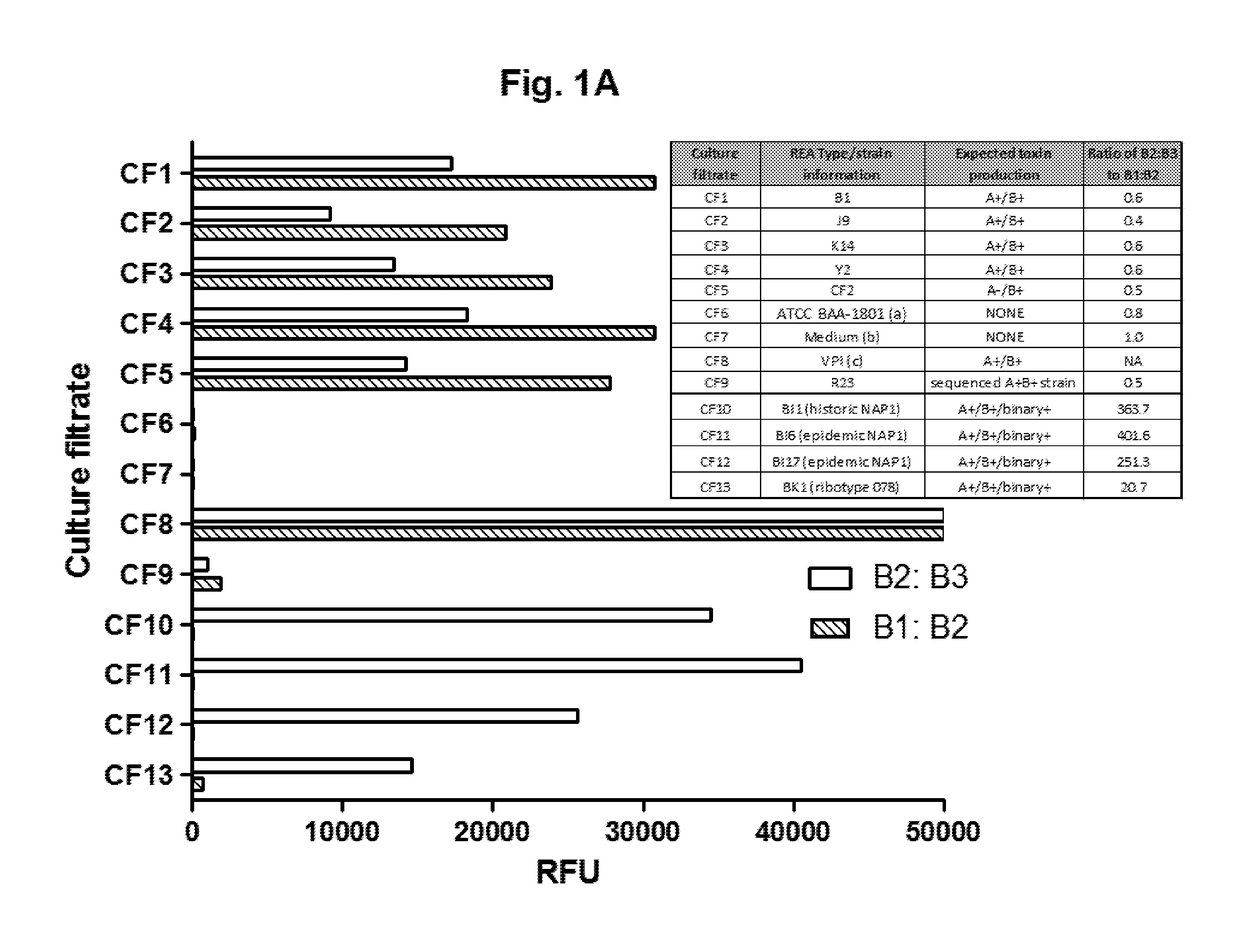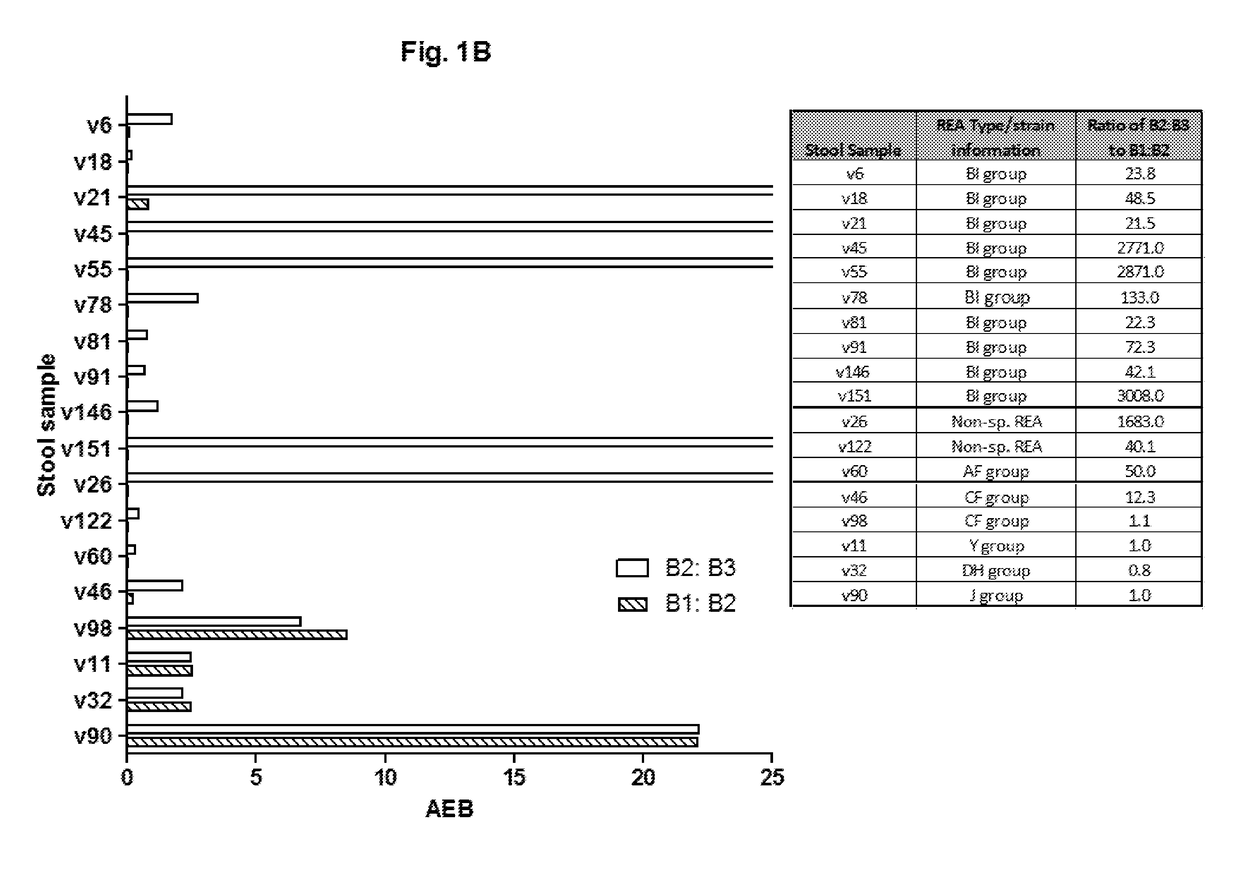Immunoassays for differential detection of clostridium difficile
a technology of immunoassays and clostridium difficile, which is applied in the field of immunoassays for differential detection of clostridium difficile, can solve the problems of major limitations of available diagnostics, increased rates of severe clinical presentations and worsening clinical outcomes, and increased rates of cdi of clostridium difficil
- Summary
- Abstract
- Description
- Claims
- Application Information
AI Technical Summary
Benefits of technology
Problems solved by technology
Method used
Image
Examples
example 1
ial Immunodetection of Toxin B of Highly Virulent C. difficile BI / NAP-1 / 027
Methods
Conventional Bead-Based ELISA
[0105]Mouse monoclonal antibodies against toxin B (B1, B2, and B3) were provided by bioMerieux (Lyon, France). Paramagnetic beads (5×106 / ml) coated in capture antibodies were incubated with culture filtrates (CF; see Example 2 below) in the wells of a microtiter plate for 2 h at room temperature. Captured toxin proteins were labeled with a biotinylated detection antibody (0.1 μg / ml) and an enzyme conjugate (0.5 nM). Following washes, enzyme substrate was added to the microtiter plate wells, and fluorescent signals were measured using a Tecan plate reader.
Digital ELISA
[0106]Details of the Simoa technology have been described previously [Rissin, D. M. et al., Nat Biotechnol, 28(6): p. 595-9 (2010); Rissin, D. M. et al., Anal Chem, 83(6): p. 2279-85 (2011)], and assays were performed on the Simoa HD-1 Analyzer (Quanterix Corporation). Kan et al., Lab Chip, 2011. Briefly, param...
example 2
al and Clinical Validation of Digital ELISAs for Ultrasensitive Detection and Quantification of C. difficile Toxins A and B in Stool
[0113]Described herein is the development and validation of ultrasensitive and quantitative “digital ELISA” assays for toxins A and B based on single molecule array (Simoa) technology [32, 33]). Simoa technology is based on the high efficiency capture and labeling of single protein molecules on paramagnetic beads, and their detection in arrays of femtoliter-sized wells [32, 33]. The ability to isolate and detect single protein molecules leads to dramatic improvements in sensitivity such that fg / mL concentrations of proteins can be detected, typically 1000-fold more sensitive than conventional ELISA. Digital ELISAs have been shown to be highly robust and reproducible for detection of low levels of proteins in highly complex matrices including cell culture supernatant, serum, plasma, and cerebral spinal fluid (CSF) [32-37]. The assays described herein rep...
PUM
| Property | Measurement | Unit |
|---|---|---|
| concentration | aaaaa | aaaaa |
| concentration | aaaaa | aaaaa |
| molecular weight | aaaaa | aaaaa |
Abstract
Description
Claims
Application Information
 Login to View More
Login to View More - R&D
- Intellectual Property
- Life Sciences
- Materials
- Tech Scout
- Unparalleled Data Quality
- Higher Quality Content
- 60% Fewer Hallucinations
Browse by: Latest US Patents, China's latest patents, Technical Efficacy Thesaurus, Application Domain, Technology Topic, Popular Technical Reports.
© 2025 PatSnap. All rights reserved.Legal|Privacy policy|Modern Slavery Act Transparency Statement|Sitemap|About US| Contact US: help@patsnap.com



